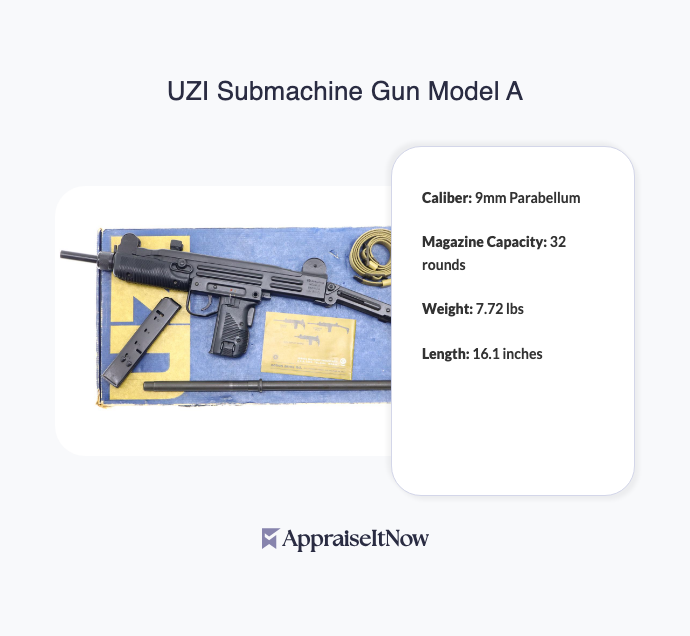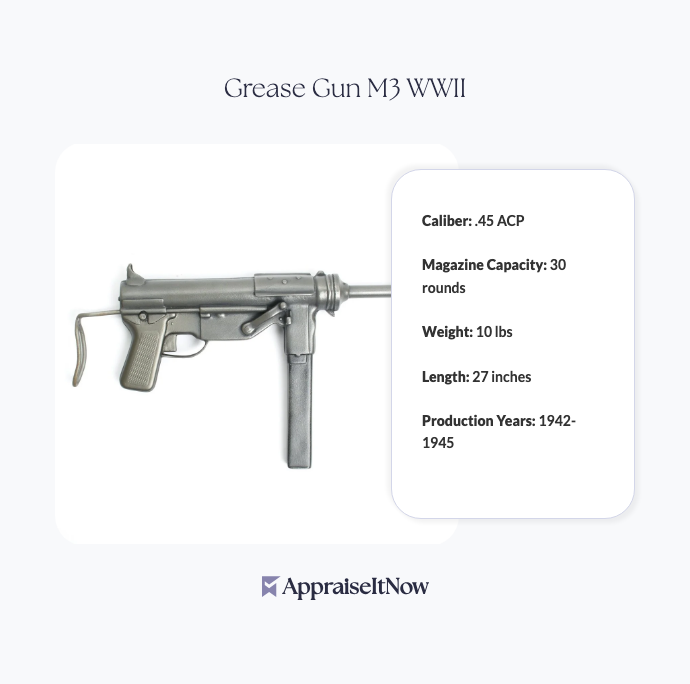<h1>How to Get Your Enfield Rifle Musket 1853 Appraised</h1>
<p>The Enfield Rifle Musket 1853 stands as one of the most historically significant firearms ever produced, commanding <strong>$2,000 to $3,000</strong> in today's collector market. Whether you've inherited one, discovered it at an estate sale, or are considering a purchase, understanding how to properly appraise this iconic British military weapon ensures you make informed decisions about value, insurance, and authenticity.</p>
<h2>Understanding Your 1853 Enfield's Market Position</h2>
<p>Your Enfield Rifle Musket represents a pivotal moment in firearms evolution. Introduced in 1853, this .577 caliber muzzle-loader saw extensive service during the Crimean War and the American Civil War, establishing itself as one of the most reliable and accurate weapons of its era. The distinctive three-band design, 39-inch barrel, and robust construction made it a formidable presence on 19th-century battlefields worldwide.</p>
<div class="callout tip"><p><strong>Historical Insight</strong></p>
<p>The 1853 Enfield's reputation for accuracy and reliability transformed military small arms development, influencing firearm design for decades to come.</p></div>
<p>The 1853 model specifically represents the apex of British firearms craftsmanship before breech-loading mechanisms rendered muzzle-loaders obsolete. Used by armies across more than 50 nations, from Canada to India, the Enfield achieved global adoption rarely seen with military weapons. This widespread historical significance drives collector demand and helps explain why <a href="/types/antique-gun">antique gun</a> specialists recognize the Enfield as a cornerstone collectible.</p>
<h2>What Impacts Your Enfield 1853 Value</h2>
<h3>Condition Factors That Drive Pricing</h3>
<p>The condition of your Enfield Rifle Musket dramatically affects its appraisal value. Professional appraisers examine specific damage patterns and mechanical aspects that directly quantify worth reductions or premiums:</p>
<p><strong>Wood stock condition</strong> matters substantially—cracks, repairs, or replacement furniture can reduce value by 20-40%. <strong>Bore condition</strong> represents another critical factor; a bright, sharp bore suggests minimal firing history and commands premiums of 15-25% over heavily used examples. <strong>Mechanical functioning</strong>, particularly whether the lock mechanisms operate smoothly, influences value by similar percentages. <strong>Rust and pitting</strong> on the barrel or metal components reduce appraisal values by 10-30% depending on severity, while <strong>replaced parts</strong> can decrease overall value by 30-50% if the original components aren't documented.</p>
<p>The distinction between a well-maintained original and a heavily restored example can mean the difference between $2,500 and $1,200 for otherwise identical models. This is why comprehensive <a href="/blog/what-to-look-for-when-appraising-an-antique-gun">firearms appraisal documentation</a> becomes essential for establishing true market value.</p>
<h3>Identifying Marks That Enhance Value</h3>
<p>Specific identifying marks, stamps, serial numbers, and proof marks on your 1853 Enfield substantially influence market value. <strong>British military proof marks</strong>—typically found on the barrel and lock—verify authenticity and can increase value by 15-20%. <strong>Maker's marks</strong> from established manufacturers like <strong>Enfield</strong>, <strong>Pritchett</strong>, or <strong>Barnett</strong> add credibility and collector appeal. <strong>Unit stamps</strong> or regimental markings indicating service with specific British regiments or colonial forces create significant premiums, sometimes 25-35% above unmarked examples.</p>
<p>The presence of <strong>numbered components</strong> where receiver, barrel, and lock share matching serial numbers indicates quality control and originality that collectors value highly. Conversely, mismatched numbers may suggest assembly from parts or field repairs, reducing value by 10-15%. Professional appraisers trained in <a href="/blog/5-tips-for-getting-the-most-accurate-antique-gun-appraisal">antique firearms authentication</a> can differentiate these details through specialized magnification and documentation analysis.</p>
<h3>Variant Types and Rarity Rankings</h3>
<p>The 1853 Enfield exists in several variants, each carrying different market values based on rarity and historical significance. Early <strong>Pattern 1853</strong> models represent the original design and command baseline values. <strong>Pattern 1856</strong> and <strong>1858</strong> variants introduced mechanical refinements, with the 1856 sometimes bringing 10-15% premiums due to improved reliability features. <strong>Indian-marked Enfields</strong> with unique proof stamps or maker designations often command 15-20% increases, reflecting specialized collector interest.</p>
<p><strong>Volunteer or civilian-marked examples</strong> represent another variant category, sometimes valued slightly lower due to reduced military prestige but potentially appreciated by collectors seeking broader historical context. The condition of these variants matters more than the variant itself—an excellent 1858 will outvalue a poor-condition 1853, though pristine early-pattern examples remain most sought after by serious collectors focused on historical authenticity.</p>
<h2>Provenance: Transforming Documentation into Value</h2>
<h3>Why Provenance Matters</h3>
<p>Provenance documentation—evidence of military unit association, battlefield use, original soldier ownership, or wartime paperwork—transforms your 1853 Enfield from a valuable firearm into a historically significant artifact commanding premium prices. An Enfield with documented service in the Crimean War might appreciate 30-40% above comparable unmarked examples. Service records indicating American Civil War use can generate 25-35% premiums, particularly for specimens carried by noted units or individuals.</p>
<p>Documented provenance requires specific evidence: <strong>unit rosters</strong> showing soldier names and service dates, <strong>regimental records</strong> indicating weapon assignments, <strong>period correspondence</strong> or <strong>diaries</strong> mentioning the specific firearm, or <strong>museum documentation</strong> establishing the weapon's historical context. Original soldier accounts, even informal letters or veterans' pension records, significantly enhance appraisal values when professionally verified.</p>
<h3>Documentation Best Practices</h3>
<p>When compiling provenance for your Enfield, organize materials chronologically and cross-reference them with historical records. Service records from the National Archives (UK) or U.S. Civil War databases provide authoritative documentation. Original photographs showing the weapon in period contexts strengthen provenance claims. Letters or documents from previous owners describing the firearm's history add supporting evidence, though secondary accounts require verification against primary sources.</p>
<p>Professional appraisers specializing in <a href="/types/memorabilia-and-collectibles">military memorabilia</a> understand how to evaluate and weight different provenance evidence. This expertise ensures your documentation strengthens rather than confuses your appraisal value. Online heritage databases and regimental association records increasingly provide accessible verification tools that complement formal archival research.</p>
<div class="callout note"><p><strong>Provenance Principle</strong></p>
<p>The stronger your documentation chain from original soldier through subsequent owners to present day, the more confidently an appraiser can assign premium value to your 1853 Enfield.</p></div>
<h2>Restoration, Replacement Parts, and Market Impact</h2>
<h3>How Restorations Affect Value</h3>
<p>The question of whether to restore your Enfield requires understanding how restoration affects collectible value. Generally, <strong>unrestored originals command 20-30% premiums</strong> over professionally restored examples, even when the restoration is expertly executed. Collectors of <a href="/blog/common-mistakes-to-avoid-when-getting-an-antique-gun-appraisal">antique guns</a> often prefer authentic patina and original finishes—even worn ones—over refinished work.</p>
<p><strong>Deactivated examples</strong>, particularly those meeting EU or UK specifications, see value reductions of 50-60% compared to functional firearms. This reflects the reality that deactivation, while legally necessary in some jurisdictions, permanently removes the object's mechanical integrity. A deactivated 1853 Enfield valued at $1,000-$1,500 would have appraised at $2,000-$3,000 before deactivation.</p>
<p><strong>Replacement parts</strong>, especially non-original furniture or repaired locks, reduce appraisal values by 10-25% depending on how visible and numerous the replacements are. An Enfield with matching original components throughout might appraise at $2,800, while an otherwise identical example with replaced bands or trigger guard could land at $2,200.</p>
<h2>Legal Status and Transfer Requirements</h2>
<h3>Understanding Regulations Before Buying or Selling</h3>
<p>The 1853 Enfield's legal status varies significantly by jurisdiction, directly affecting market value and your ability to transact. In the <strong>United States</strong>, federal law generally treats antique black powder firearms produced before 1898 as non-regulated items, meaning your Enfield doesn't require FFL transfer or background checks. However, <strong>state and local regulations</strong> vary dramatically—some jurisdictions impose additional restrictions or require permits even for antique firearms.</p>
<p><strong>International restrictions</strong> significantly impact value and marketability. The <strong>United Kingdom and European Union</strong> classify most firearms, including deactivated Enfields, as controlled weapons requiring special licensing. <strong>Export from the U.S.</strong> to these regions typically requires ITAR (International Traffic in Arms Regulations) permits, which appraisers and dealers must navigate. <strong>Canadian regulations</strong> similarly restrict importation of firearms, even antiques, creating different market dynamics than domestic U.S. sales.</p>
<p>When seeking professional appraisal, choose experts familiar with these regulatory landscapes. AppraiseItNow connects you with appraisers holding credentials in <a href="/blog/picking-the-right-antique-gun-appraisal-expert-for-your-needs">firearms valuation</a> who understand how legal status impacts fair market value. Your appraisal report should clearly note any restrictions affecting domestic and international sale potential.</p>
<div class="callout tip"><p><strong>Legal Consideration</strong></p>
<p>Always consult with your appraiser and local authorities before selling or transferring your 1853 Enfield to ensure compliance with all applicable regulations affecting your specific jurisdiction and intended buyer location.</p></div>
<h2>Current Market Trends and Auction Results</h2>
<h3>Recent Sales Data and Pricing Patterns</h3>
<p>The 1853 Enfield market shows healthy collector demand with prices trending steadily upward over the past five years. Recent auction results provide concrete market benchmarks: an excellent-condition Enfield with maker's marks sold for $2,850 in 2023, while a fair-condition example brought $1,400 at the same auction house. A specimen with documented Crimean War service achieved $3,200 in 2022, representing the premium that strong provenance commands.</p>
<p>International auction comparisons reveal consistent patterns across markets. British auction houses show similar pricing ($1,600-£2,400) for comparable examples, while specialized military collectible auctions see premiums of 10-15% over general antique sales. The stability of these valuations across multiple markets reinforces the baseline $2,000-$3,000 range for quality examples, with exceptional specimens commanding higher prices.</p>
<h3>Demand Factors and Market Drivers</h3>
<p>Collector interest remains strong, particularly among Civil War historians, British military enthusiasts, and general <a href="/types/antique-gun">antique firearms</a> collectors. Museums occasionally acquire examples for interpretation collections, though educational budgets limit institutional buying power. Film and television production companies sometimes source authentic Enfields for period pieces, creating occasional demand spikes, though this remains unpredictable and typically affects premium specimens rather than average examples.</p>
<p>The finite supply—no new Enfields have been manufactured since the 1880s, with most production occurring between 1853-1860—ensures basic supply-and-demand pressure supporting values. However, unlike some ultra-rare firearms, the Enfield's substantial original production numbers (hundreds of thousands) mean healthy supply for collectors without artificial scarcity-driven premiums.</p>
<h2>Getting Your Enfield Properly Appraised</h2>
<h3>What Professional Appraisers Examine</h3>
<p>A comprehensive 1853 Enfield appraisal requires detailed examination across multiple dimensions. Appraisers photographed your firearm from multiple angles, capturing maker's marks, proof marks, serial numbers, and any distinguishing features. Bore condition is inspected using specialized tools that measure rifling sharpness and identify rust or pitting. Mechanical function is tested, lock mechanisms examined, and wood stock inspected for cracks, repairs, or replacements.</p>
<p>Provenance documentation receives careful evaluation, with appraisers cross-referencing markings against historical records and comparing your specific serial number or unit designation against known production records. Market analysis involves reviewing comparable recent sales, auction results, and dealer pricing to establish fair market value within current conditions.</p>
<p>Different appraisal types serve different purposes. <strong>Insurance appraisals</strong> emphasize replacement cost and current market conditions. <strong>Estate appraisals</strong> document fair market value for distribution or tax purposes. <strong>Fair market value appraisals</strong> establish what a knowledgeable buyer and seller would agree upon. Each type requires different detail levels and legal documentation, something certified professionals understand through training in <a href="/blog/the-benefits-of-professional-antique-gun-appraisals">firearms appraisal standards</a>.</p>
<h3>Choosing Qualified Appraisers</h3>
<p>Seek appraisers with specific credentials in firearms valuation. <strong>ASA (American Society of Appraisers)</strong>, <strong>ISA (International Society of Appraisers)</strong>, or <strong>AAA (American Association of Appraisers)</strong> certifications indicate professional standards and continuing education commitments. Look for appraisers with documented experience appraising antique firearms specifically—generalist appraisers lack the specialized knowledge necessary for accurate 1853 Enfield valuations.</p>
<p>USPAP (Uniform Standards of Professional Appraisal Practice) compliance ensures your appraisal meets legal and financial institution standards. Ask potential appraisers whether they hold USPAP certification and whether their reports are accepted by major insurance companies and financial institutions. Your appraiser should provide references from previous clients and detailed explanations of their methodology.</p>
<div class="callout note"><p><strong>Key Takeaway</strong></p>
<p>A certified, professionally documented appraisal of your 1853 Enfield Rifle Musket provides confidence in its $2,000-$3,000 valuation, ensures proper insurance coverage, and creates legally defensible documentation for sale, estate planning, or collection management purposes. AppraiseItNow connects you with credentialed firearms specialists who understand the historical significance, technical details, and market dynamics that determine your Enfield's true worth.</p></div>







.avif)







